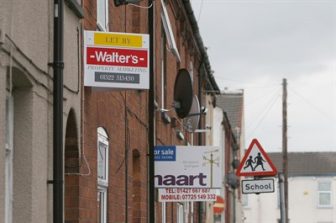 The historically low number of residential properties for sale is having an adverse impact on many estate agents, with the latest research by Propertymark revealing that an average estate agency branch now has an average of 29 buyers on average showing interest in any one property while stock dwindles.
The historically low number of residential properties for sale is having an adverse impact on many estate agents, with the latest research by Propertymark revealing that an average estate agency branch now has an average of 29 buyers on average showing interest in any one property while stock dwindles.
There is growing concern among many agents at the widening supply-demand imbalance in the market, as they struggle to secure a sufficient volume of housing stock for sale.
A shortage of homes coming up for sale is continuing to drive property prices higher, fresh data has revealed.
Enquiries from buyers looking to move increased in December, but the average number of homes on estate agents’ books remains low, according to the Royal Institute of Chartered Surveyors’ latest survey, released this morning.
A headline net balance of -14% of contributors noted a decline in new listings, thereby extending a sequence of negative readings for this metric into a ninth consecutive month.
Moreover, new instructions either fell or remained stagnant across all parts of the UK according to the latest data points.
Iain McKenzie, CEO of The Guild of Property Professionals, said: “Estate agents’ portfolios are at historic lows, with many branches having a dozen or fewer properties to sell, and there is no sign of this situation changing.
“Despite rising inflation, consumer confidence is high, and growing optimism that the Omicron wave is waning will continue to push house prices steadily higher.”
Residential property prices jumped towards the end of last year, separate data showed yesterday, as growth picked up again following the end of the stamp duty holiday.
UK house prices increased by 10% in the year to November, up from 9.8% in October and in line with consensus, according to the Office for National Statistics.
On a non-seasonally adjusted basis, the House Price Index increased 1.2% between October and November, compared to a rise of 1% during the same period a year previously.
The average price of a home in England in November was £288,130, up 1.4% month-on-month. In Scotland it rose 1.0% to £182,755, but eased 0.7% in Wales to £199,877. In Northern Ireland, property prices increased by 10.7% over the year to the third quarter to £159, 109.
There were also disparities in price growth based on property type. Prices for detached homes jumped 13.9% year-on-year in November, but by just 5.6% for flats.
Nathan Emerson, CEO at Propertymark, commented: “As predicted, by using our data provided by member agents on the ground, we know that the market during November has been historically busy, so it’s unsurprising that the average house price is £25,000 more expensive than in November 2020.
“Our Housing Market Report for November revealed an average of 29 potential buyers for every available property per branch – a 21% increase in competition from October, however, despite a rise in the average number of potential buyers, a record low supply of properties was recorded, with an average of just 20 homes per branch – 50% less than in November 2020.
“Low stock levels and high demand has created fierce competition in the housing market and has contributed to the rise in prices. Agents have also told of unprecedented activity moving into December so a further rise in house prices is likely to continue in next month’s report.”
Any fears that the end of the stamp duty holiday would bring about a decline in house price growth can now be well and truly put to bed, according to James Forrester, managing director of Barrows and Forrester.
He Said: “Not only has the market maintained momentum, but it’s continued to shift through the gears during what is usually a quieter period in the year.
“Expect more of the same in 2022, as demand remains robust, stock remains scarce and the cost of borrowing remains very affordable.”
Nick Leeming, chairman at Jackson-Stops, believes that the imbalance between stock and demand will continue to underpin housing activity in coming months.
He commented: “This [anticipated growth in property prices] is reflected by what we are seeing across our branches where the complex and ongoing changes to the nation’s working patterns and lifestyle aspirations have only heightened the importance Britons place on owning a home.
“Heading in to 2022, the countryside renaissance shows no sign of abating but could be tempered with wider concerns about the rising cost of living and the cooling effect of higher interest rates.
“Whilst the housing market is seeing some sellers delay listing their property until they feel confident that they can find their suitable next step across the nation, we are seeing many vendors committed to finding the right home and great houses to move to. As such, listing now puts vendors in the best possible position to capitalise on a buoyant market and we’d hope to see the level of stock in the market improve in the coming months.”


Comments are closed.